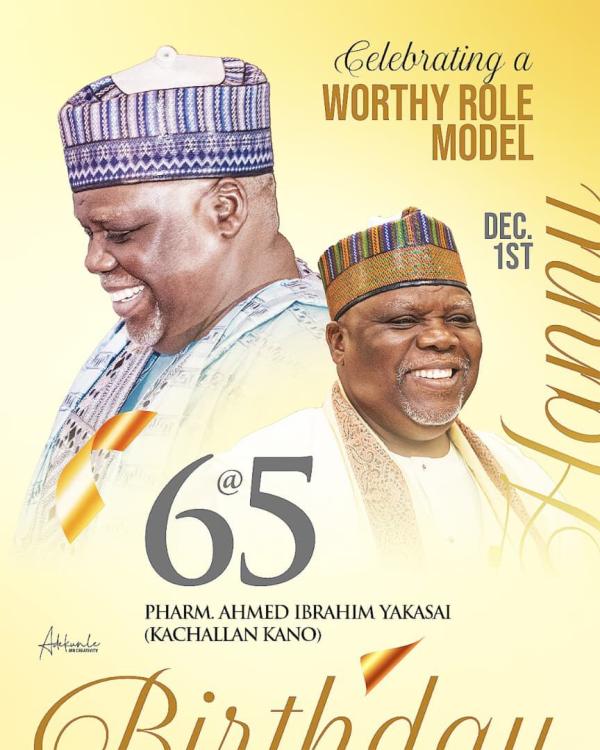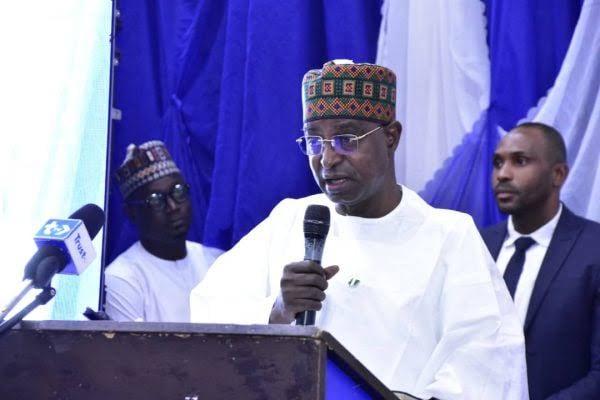
Nigerian President, Muhammadu Buhari
Saturday, 19th June 2021: The Federal Government seems not to be showing any sign of relenting over its decision on grazing routes recovery in spite of the overwhelming outcry against the plan to retrace and recover grazing routes across the country.
CEOAFRICA findings revealed that stock routes, popularly called grazing routes, are currently being retraced and recovered by the Federal Government for herders to graze their cattle.
In its defence, the Federal Government said this was meant to address the clashes between herdsmen and farmers.
Although some of the routes are believed to have been encroached upon due to human activities, CEOAFRICA gathered that the government had embarked on a process of identifying monuments along the routes in order to get them back as locations for cattle grazing.
Contrary to the expectations of many Nigerians particularly in South that the grazing routes retracing and eventual recovery might not see the light of day, officials of the Federal Ministry of Agriculture and Rural Development hinted on Friday that the routes’ recovery would go on. They, however, said it would be done mainly in non-conflict zones.
They also stated that routes that had been encroached upon as a result of the development of public infrastructure might be left out of the recovery exercise.
The acting Director, Animal Husbandry Department, FMARD, Winnie Lai-Solarin, stated that while cattle ranching had been one of the major options canvassed for herders, not every pastoralist would be able to afford ranching at the moment.
She said, “There are some stock routes that we have across the country, and in the past, we had monuments along these stock routes, particularly the primary stock routes.
“And in the course of farming or other human activities along those stock routes, the monuments were altered, but we know where they are. So we are saying that some of them can be retraced.
“And this is particularly for areas that are not encroached upon as of now. The pastoralists know the routes, and on some of those routes, you will see the pieces of the monuments along them.”
Lai-Solarin added, “So for those that are not encroached upon and are not in conflict zones, we will go ahead to retrace and guide the pastoralists along them. We didn’t get to where we are today in one day and so we cannot expect that every pastoralist should suddenly start ranching now.
“Some would still have to move but let’s keep the movement as safe as possible and in areas that are not conflict zones. That is what I am saying. We are not going to retrace stock routes where there are infrastructures that are for the public good.”
Another official at the FMARD familiar with the development stated that the government was not happy with the killings associated with clashes between herdsmen and farmers.
The official, who requested not to be named for lack of authorisation, explained that the stock routes were in three classes.
The source said, “We need to create safe places that are easy for them (herders) to graze their cattle so that they won’t need to travel on the roads. We have primary and secondary stock routes and in some cases, we have tertiary stock routes.”
Providing further explanation on the three classes of routes, the official said, “The primary stock routes are the major routes that run in a North-to-South direction from the Sahel to the coastal market.
“And then, there are some major routes that run inter-state from the North, while others run intra-state.”
The Minister of Agriculture and Rural Development, Sabo Nanono, had announced on Thursday that the Federal Capital Territory and 22 states had registered for the National Livestock Transformation Plan, (NLTP), as part of measures to establish grazing reserves in their domains.
He also announced that seven of these states had earmarked 400,000 hectares of land for the initiative, as the establishment of grazing reserves were currently ongoing in Nasarawa, Borno, Niger, Kaduna and some other states.
“Twenty-two states and the Federal Capital Territory have registered with the NLTP office, out of which 10 states have created their own teams which have been trained by the federal office,” Nanono stated.
He explained that seven of the 10 states earmarked about 19 grazing reserves for the implementation of the NLTP, with a total land size of approximately 400,00 hectares.
The NLTP was designed by the Federal Government to address the lingering farmer-herder crisis across the country. The plan was inaugurated by Vice President Yemi Osinbajo in 2018 at the Gongoshi Grazing Reserve in Mayo-Belwa Local Government Area of Adamawa State.
The plan was designed to run from 2019 to 2028 as a collaborative project among the federal and state governments, farmers, pastoralists, and private investors.
In February 2021, the Federal Government said it had mapped out 30 grazing reserves across the country for the NLTP implementation.
However, some states, especially in the south, had rejected the idea, saying they had no land to donate to the Federal Government for the initiative. They said any individual who wanted to go into ranching should rather look for land and buy.
But in a new twist, President Muhammadu Buhari during a recent interview with Arise Television, supported open grazing.
He said he had directed the Attorney General of the Federation and Minister of Justice, Abubakar Malami (SAN), to produce a gazette which delineated grazing routes in all parts of the country in the First Republic.
The President stated, “What I did was to ask him (Malami) to go and dig the gazette of the First Republic when people were obeying laws.
“There were cattle routes and grazing areas. Cattle routes were for when they (herdsmen) were moving upcountry, north to south or east to west. They had to go through there.”
The President’s statement followed Malami’s recent criticism of Southern governors for banning open grazing, saying their action was like banning the sale of spare parts in the North.
However, several Southern states and institutions like the Nigerian Bar Association and the Pan-Niger Delta Forum have faulted the President on the revival of old grazing routes.
For instance, states including Ondo, Delta, Cross River, Enugu, Benue, Akwa Ibom, and Oyo said there was no existence of a gazette which marked out grazing routes for cattle across the country.
The state governments also insisted on the ban on open grazing despite the President’s opposition to it.
Also, the Chairman, Senate Committee on Media and Public Affairs, Senator Ajibola Basiru, insisted that there was no law on grazing routes in any part of Nigeria.
Rather, the lawmaker said the law on grazing reserves recognised as a state law in the 1999 Constitution actually criminalised open grazing.
The Osun Central Senatorial District Senator, who holds a doctoral degree in property law, gave the clarification in a statement personally signed by him titled, ‘No law of grazing routes in Nigeria: Either North or South.’
He stressed that modern animal husbandry practices remained the panacea to herders/farmers clashes in Nigeria.
Basiru said, “The Grazing Reserves Laws in some states created from the former Northern Region of Nigeria are deemed to be state laws by Section 318 of the 1999 Constitution (as amended).
“They have been adopted from the Grazing Reserve Law of Northern Region of Nigeria (NN Law of 1965), including CAP 3 Laws of Kwara State, CAP 56 Laws of Bauchi State and CAP 55 Laws of Katsina State.
“On the case of these laws, it was expressly stated that they were adopted from northern Nigeria Laws of 1965. There is no provision for grazing routes as it is being claimed.”
Basiru insisted that there had never been any federal legislation on Grazing Reserves and/or Grazing Routes in Nigeria, and northern region laws were not applicable everywhere in Nigeria. He said by the present constitutional provisions, such law could not be within the competence of the National Assembly.
“However, what is ‘trade route’ was not defined in the law and there is no other reference to the term ‘trade route’ in the law. Under those laws, animals are only allowed to graze in the grazing reserve or ‘trade route,’” the Senate spokesperson added.
Only four states ready for ranching –FG
Meanwhile, of the over 20 states that have assented to the National Livestock Transformation Plan, the Federal Government says only four are ready for the scheme’s take-off. They are Nasarawa, Plateau, Adamawa, and Kaduna states.
The Senior Special Assistant to the President on Agriculture, Dr Andrew Kwasari, said before the end of June, the four states would receive the Federal Government’s counterpart funding of 51 per cent
“We are finalising the processes in the four states that are ready – Nasarawa, Plateau, Adamawa, and Kaduna. So the Federal Government is working on it. I’m sure by the end of the month, they will have it (counterpart funding),” Kwasari told CEOAFRICA
He said the states that were ready to implement the NLTP would receive 49 per cent funding from the Federal Government.
He said, “The Federal Government is working to support states and individuals in implementing the NLTP, which was approved by the National Council of Agriculture in conjunction with the National Economic Council. It’s basically to train the pastoralists in the technical skills they need to run ranches. That’s what we’re working on.
“The Federal Government is providing 49 per cent funding, which is about N100bn. The remaining 51 per cent funding is to come from the private sector and development partners.”
Asked if the Federal Government was reaching out to development organisations like the African Development Bank and World Bank to support the NLTP project, Kwasari answered in the affirmative.
“They are all welcome. In Nasarawa State, we have already gotten a grant of €400,000 (N195m) from The Netherlands. The Federal Government is reaching out to multilateral and bilateral partners so that no stone is left unturned to ensure we close the funding gap. Considering the situation of the oil crisis and others, organisations like the World Bank and AfDB are welcome,” he said.






















